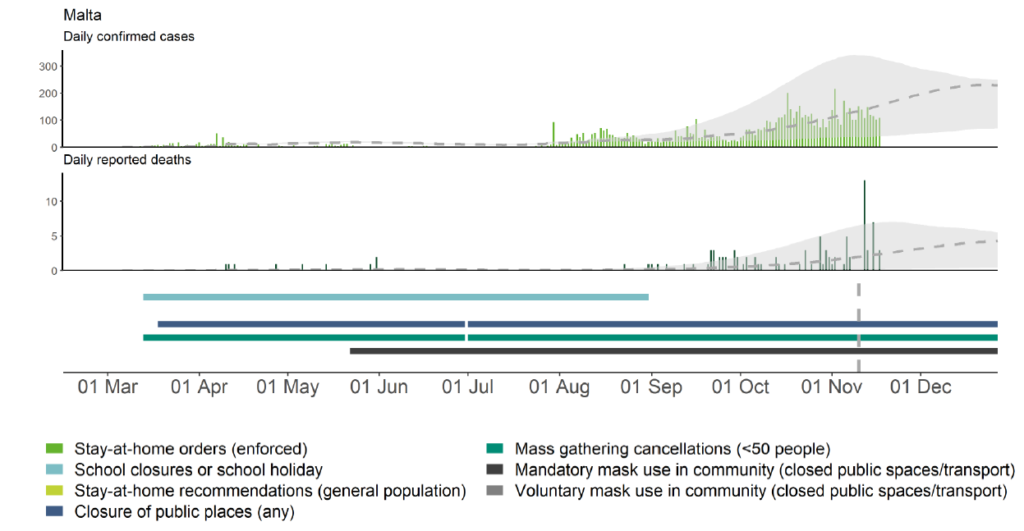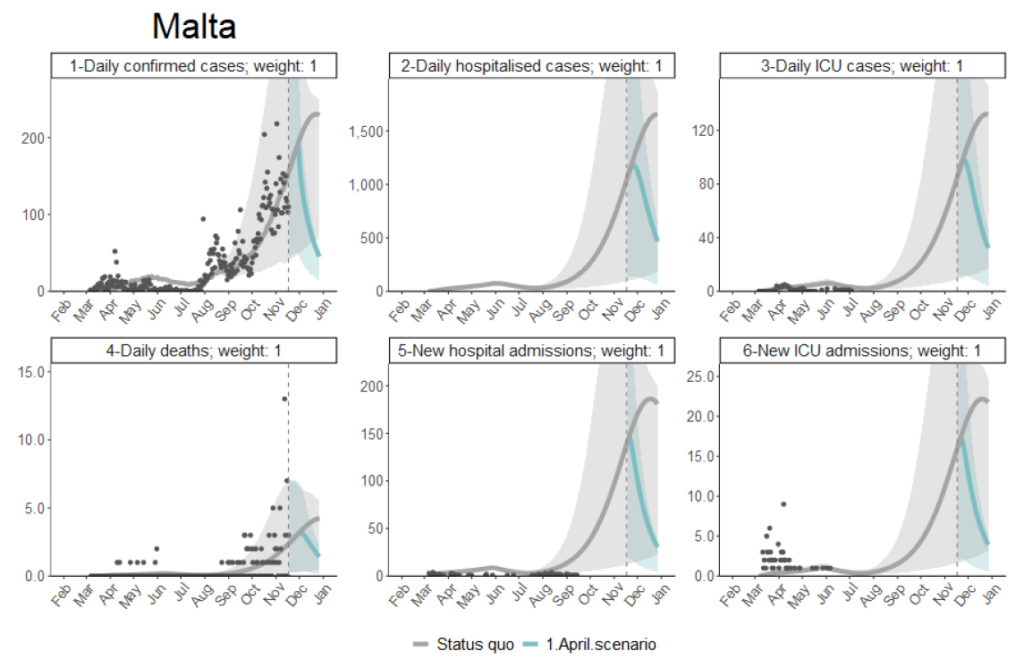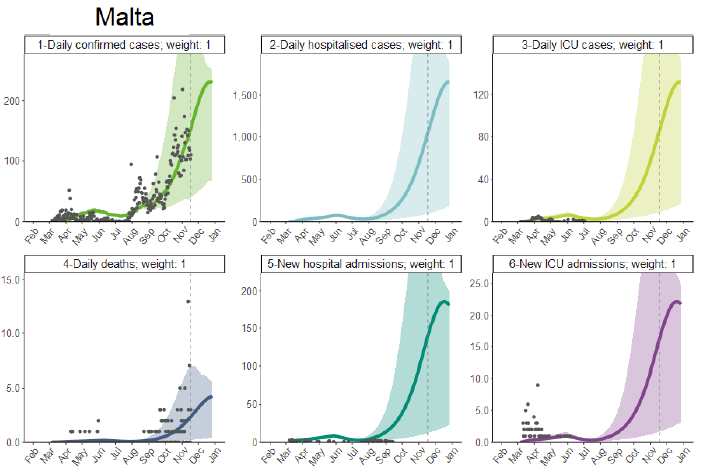Malta’s COVID-19 Cases Projected To Decline If Measures Are Kept In Place

Malta’s number of new COVID-19 cases could drop by close to 50% by the end of December if current measures are kept in place, the latest report by the European Centre for Disease Prevention and Control (ECDC) has found.
If measures are kept in place, there will also lead to a significant drop in hospitalisations, new cases, and crucially fatalities.
Malta currently has 2,082 active COVID-19 cases after 133 new COVID-19 cases and 107 recoveries were recorded earlier today. The total number of fatalities is now 122 after five more COVID-19-related deaths were confirmed by Health Authorities.
Testing has increased in recent weeks and some political figures have attributed the rise in cases to improved testing, including Malta’s Prime Minister Robert Abela.
However, the ECDC has made it clear that “the increase in testing rates is clearly no longer sufficient to explain the increased number of confirmed cases, implying that transmission of the virus has increased”.

ECDC's Projections for COVID-19 Cases in Malta - Source: Updated projections of COVID-19 in the EU/EEA and the UK by ECDC
The government has so far instituted several measures over the last few weeks – including limits of people in public, mandatory mask wearing, and limits on bars and snack bars. These measures are set to be lifted on 1st December. However, a continued surge of cases is raising questions as to whether the measures should continue.
The ECDC did also create an alternative scenario if measures employed during April 2020, like lockdowns, were employed today.
Within this scenario, Malta would see a drastic decrease in hospitalisations, new cases, deaths, and ICU admissions. In this case, Malta can be seen plummeting nearly immediately to low figures by the end of the December compared with the ‘status quo’ projection.
Of particular note, the ECDC has estimated that over two-thirds of people in Europe have also returned close to their pre-pandemic levels of contact with people.

ECDC's 'April Scenario' - Source: Updated projections of COVID-19 in the EU/EEA and the UK by ECDC
These projections are heavily dependent on current measures remaining in place. Should they remain, a stabilisation of cases is projected for the end of December or the first week of January.
“[This] model is a baseline ‘status quo’ scenario, assuming all control measures in place in early November 2020 will be continued until the end of the projection period,” the ECDC has said.
Primarily, this scenario analyses the potential impact such measures and current policies would have upon the rates of hospitalisation rates, new cases, ICU admissions and deaths. All figures and data provided within the ECDC’s report have been based on COVID-19 tests conducted in each country since 1st June 2020.
The ECDC has warned that should current measures be lifted on 21st December, an increase is projected to appear in the first week of January 2021. Alternatively, lifting of any measures around 7th December, the associated increase in deaths and hospitalisations will be seen on 24th December.
“The incidence rate will still be falling in December 2020, reducing restrictions earlier will lead to a more rapid increase in case numbers, hospitalisation and death” the ECDC explained in their report.

Forecast of Confirmed and Projected Cases of COVID-19 - Source: Updated projections of COVID-19 in the EU/EEA and the UK by ECDC
The report, which you can read here, notes that the main limitation of the projections are that these are wide projections.
Do you think Malta needs to follow the April Scenario? Comment below!
